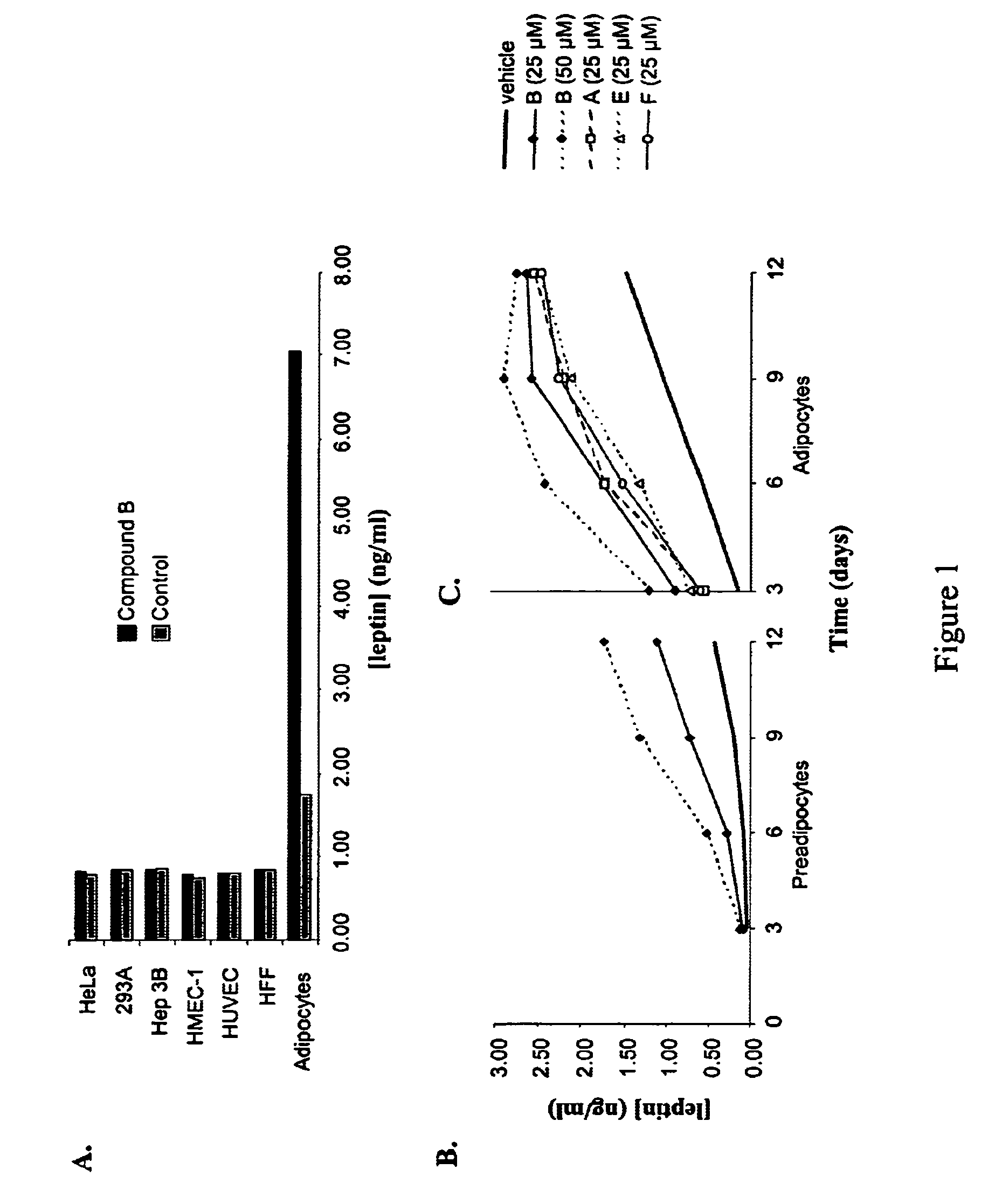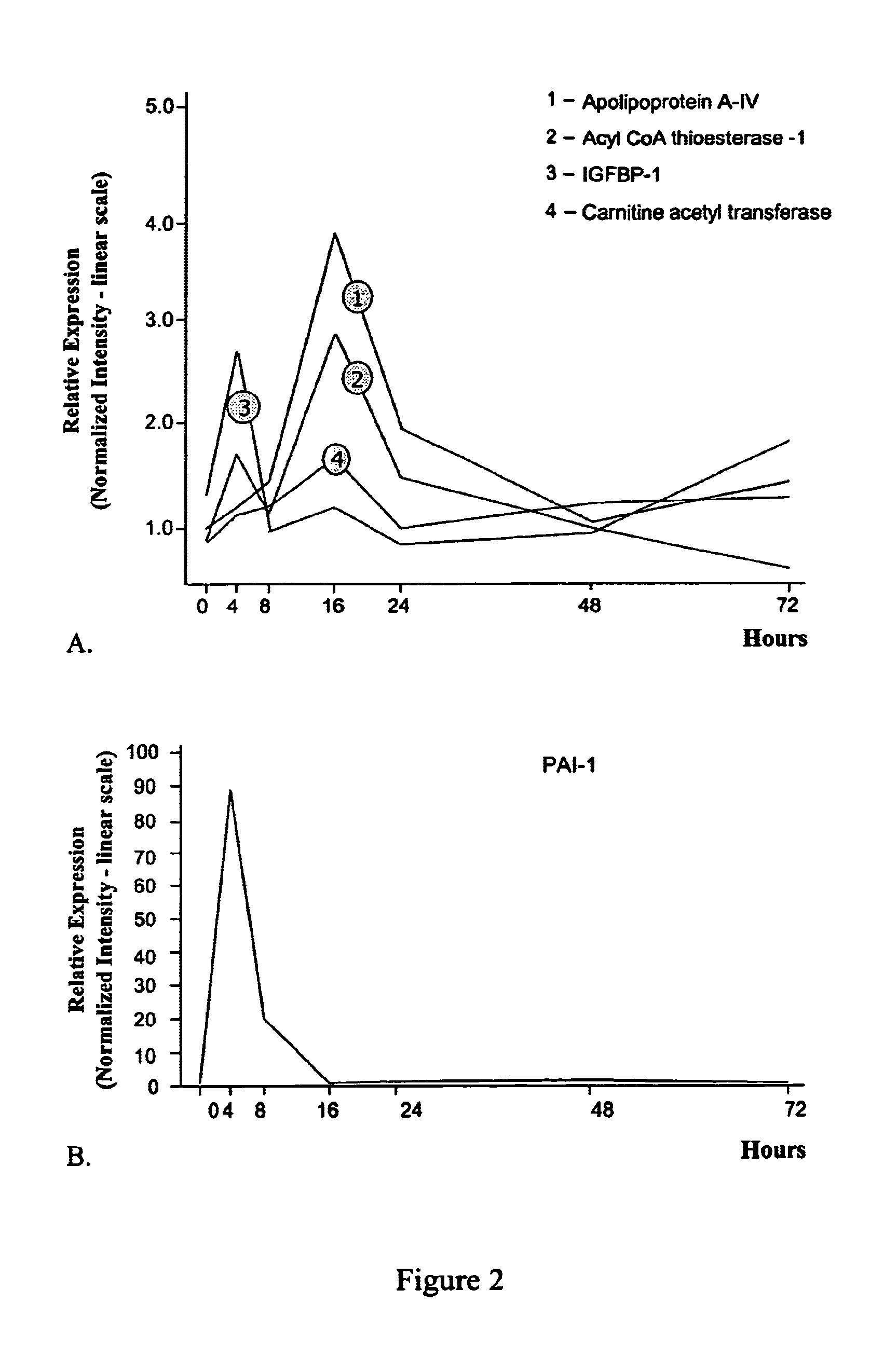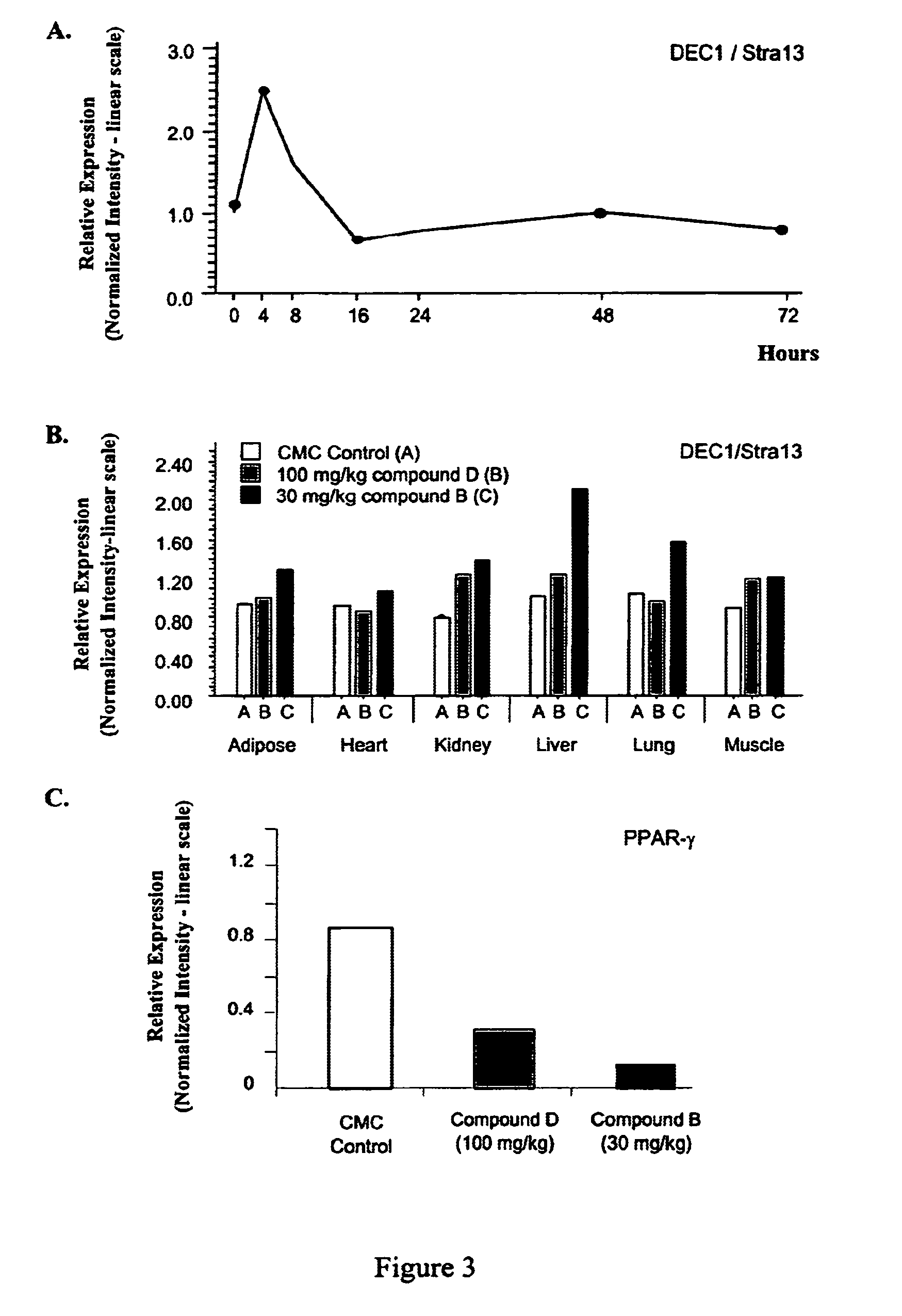Fat regulation
a technology of fat regulation and homeostasis, applied in the field of fat homeostasis and metabolism, can solve the problems of increasing the risk of diabetes and heart disease, obesity is associated with many adverse health effects, and the risk of obesity, so as to reduce the risk of obesity and diabetes, reduce the risk of obesity and the effect of oxygen consumption
- Summary
- Abstract
- Description
- Claims
- Application Information
AI Technical Summary
Benefits of technology
Problems solved by technology
Method used
Image
Examples
example 1
Test Materials
[0127]In general, compounds of the present invention were synthesized using standard chemical methods known to those of skill in the art. Compounds were analyzed for purity by high pressure liquid chromatography and stored at room temperature protected from light. During formulation for various uses, compounds were micronized in suspension at either 500 rpm for 25 minutes or 750 rpm for 10 min using a PULVERISETTE 7 planetary micro mill (Fritsch GMBH, Germany) to facilitate uniform particle size.
[0128]Suspensions of micronized compound Cor oral gavage were prepared immediately before use. Compound was suspended in aqueous solution containing 0.5% sodium carboxymethylcellulose (CMC; Spectrum Chemical, Gardena Calif.), 0.1% polysorbate 80 (Mallinckrodt Baker, Inc., Phillipsburg N.J.) and stirred constantly using a magnetic stirrer or rotary shaker during dose administration. The concentration of the suspensions was calculated to achieve the intended dose level in a given...
example 2
Increased in vitro Expression of Leptin in Select Cell Types
[0130]The effect of the methods and compounds of the invention on fat regulation and, in particular, on expression of factors associated with fat metabolism and satiety was examined as follows. Human HeLa (cervical epithelial carcinoma), 293A (adenovirus-transformed fetal kidney epithelium; Qbiogene, Carlsbad Calif.), Hep3B (hepatocellular carcinoma), HFF (foreskin fibroblast), HMEC-1 (microvascular endothelial), HUVEC (umbilical vein endothelial), and adipocyte cells were separately seeded into 24 well culture dishes at 100,000 cells per well and cultured for 1 day at 37° C., 20% O2, 5% CO2 in the following media: HeLa, 293A and Hep3B in DMEM containing 1% FBS and 1% penicillin-streptomycin; HMEC-1 and HUVEC in Endothelial Growth Media (EGM-2; Cambrex, Walkersville Md.), HFF in DMEM containing 10% FBS and 1% penicillin-streptomycin, and adipocytes in Adipocyte media (Zen-Bio, Research Triangle Park N.C.). Media was then re...
example 3
Increased Expression of Factors Involved in Fat Regulation
[0137]The ability of the present compounds and methods to regulate fat metabolism, in particular, to increase expression of factors involved in fat transport, utilization, and storage, was analyzed as follows. To determine gene induction patterns over time, twenty four Swiss Webster male mice (30-32 g) were obtained from Simonsen, Inc. and treated by oral gavage with a 4 ml / kg volume of either 0.5% carboxymethyl cellulose (CMC; Sigma-Aldrich, St. Louis Mo.) (0 mg / kg) or 1.25% compound B (25 mg / ml in 0.5% CMC) (100 mg / kg). At 4, 8, 16, 24, 48, or 72 hours after the final dose, animals were anesthetized with isoflurane. The mice were then sacrificed and tissue samples of kidney, liver, brain, lung, and heart were isolated and stored in RNALATER solution (Ambion) at −80° C.
[0138]RNA isolation was carried out using the following protocol. A 50 mg section of each organ was diced, 875 μl of RLT buffer (RNEASY kit; Qiagen Inc., Vale...
PUM
| Property | Measurement | Unit |
|---|---|---|
| Body weight | aaaaa | aaaaa |
Abstract
Description
Claims
Application Information
 Login to View More
Login to View More - R&D
- Intellectual Property
- Life Sciences
- Materials
- Tech Scout
- Unparalleled Data Quality
- Higher Quality Content
- 60% Fewer Hallucinations
Browse by: Latest US Patents, China's latest patents, Technical Efficacy Thesaurus, Application Domain, Technology Topic, Popular Technical Reports.
© 2025 PatSnap. All rights reserved.Legal|Privacy policy|Modern Slavery Act Transparency Statement|Sitemap|About US| Contact US: help@patsnap.com



